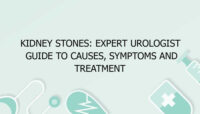Common Pediatric Foot Problems: Causes, Symptoms, and Treatment
Foot problems in children are a common concern for parents and caregivers, often requiring prompt attention to ensure proper development and avoid complications. Understanding the common pediatric foot problems, their causes, symptoms, and treatment options is essential for maintaining a child’s overall health and well-being. This comprehensive guide explores various conditions affecting children’s feet, helping parents recognize, address, and manage these issues effectively.
Understanding Common Pediatric Foot Problems
Children’s feet are complex structures that undergo significant changes as they grow. Various foot problems can arise during different stages of development, each with its own set of causes, symptoms, and treatment strategies. Here, we will explore some of the most common pediatric foot problems.
Flat Feet (Pes Planus)
Flat feet, or pes planus, is a condition where the arches of the feet collapse, causing the entire sole to make contact with the ground. This condition is particularly common in infants and young children, as their arches are still developing. In many cases, flat feet resolve on their own as the child grows. However, persistent or symptomatic flat feet may require intervention.
Causes: Flat feet can result from genetic factors, ligament laxity, or developmental issues. Some children may have flat feet due to an imbalance in the muscles and tendons supporting the arch.
Symptoms: Many children with flat feet experience no symptoms. However, some may complain of foot pain, leg fatigue, or discomfort during physical activities. In severe cases, flat feet can lead to misalignment of the ankles and knees, causing additional pain or discomfort.
Treatment: Treatment for flat feet often includes supportive footwear, custom orthotics, and physical therapy exercises to strengthen the foot and leg muscles. In rare cases where symptoms are severe and persistent, surgical intervention may be considered.
Heel Pain (Calcaneal Apophysitis)
Heel pain in children is frequently caused by a condition known as calcaneal apophysitis, or Sever’s disease. This condition affects the growth plate in the heel, leading to inflammation and pain.
Causes: Calcaneal apophysitis typically results from repetitive stress or overuse of the heel, particularly in children who participate in sports or activities involving running and jumping. The condition is common during periods of rapid growth when the growth plate is particularly vulnerable.
Symptoms: Symptoms of calcaneal apophysitis include localized heel pain, tenderness, and swelling. The pain often worsens with physical activity and improves with rest.
Treatment: Treatment generally involves rest, ice application, and the use of supportive footwear or orthotics. Stretching exercises for the Achilles tendon and calf muscles can also be beneficial. In severe cases, a temporary reduction in physical activity or the use of a walking boot may be necessary.
Ingrown Toenails
Ingrown toenails occur when the edges of the toenail grow into the surrounding skin, causing pain, redness, and swelling. This condition is common in children and can affect one or more toes.
Causes: Ingrown toenails can result from improper nail trimming, wearing tight or ill-fitting shoes, or trauma to the toe. Genetic factors can also contribute to the development of ingrown toenails.
Symptoms: Symptoms of an ingrown toenail include pain, redness, swelling, and sometimes infection around the affected toe. The condition may also cause discomfort when wearing shoes.
Treatment: Treatment for ingrown toenails involves soaking the affected foot in warm, soapy water and gently lifting the toenail away from the skin using a cotton ball. In more severe cases, a healthcare provider may need to perform a minor surgical procedure to remove part of the toenail. Preventive measures include proper nail trimming and wearing well-fitting shoes.
Toe Walking
Toe walking is a condition where a child walks on the toes or the balls of the feet rather than using a heel-to-toe gait. While toe walking can be a normal part of development in infants and toddlers, persistent toe walking beyond the age of two may indicate an underlying issue.
Causes: Toe walking may be associated with developmental delays, muscular imbalances, or neurological conditions such as cerebral palsy. In some cases, it may be a habitual behavior with no underlying medical condition.
Symptoms: The primary symptom is walking on the toes or balls of the feet, which can lead to muscle tightness and imbalance. Persistent toe walking may affect balance and coordination.
Treatment: Treatment options include physical therapy to improve gait and strengthen muscles. Stretching exercises for the Achilles tendon and calf muscles may also be recommended. In some cases, custom orthotics or braces may be used to encourage a more normal walking pattern.
Bunions
Bunions are bony protrusions that develop at the base of the big toe, causing it to angle towards the second toe. While bunions are more common in adults, they can also affect children, particularly those with a family history of the condition.
Causes: Bunions in children are often caused by genetic factors or foot structure abnormalities. Wearing tight or poorly fitting shoes can exacerbate the condition.
Symptoms: Symptoms of bunions include pain, swelling, and redness at the base of the big toe. The affected toe may also show visible deformity, and walking can become uncomfortable.
Treatment: Treatment for bunions focuses on alleviating symptoms and preventing progression. This may involve wearing well-fitting shoes, using bunion pads, and performing foot exercises. In severe cases, surgical intervention may be considered to correct the deformity.
Clubfoot (Talipes Equinovarus)
Clubfoot, or talipes equinovarus, is a congenital condition where the foot is twisted inward and downward. This condition is present at birth and can affect one or both feet.
Causes: The exact cause of clubfoot is unknown, but it is believed to result from a combination of genetic and environmental factors. Abnormalities in the development of the bones, muscles, and tendons in the foot contribute to the condition.
Symptoms: Symptoms of clubfoot include a noticeable deformity where the foot is turned inward and downward. The condition can affect the child’s ability to walk and cause discomfort.
Treatment: Early intervention is crucial for treating clubfoot. Treatment typically involves a series of gentle manipulations and castings to gradually correct the foot’s position. In some cases, surgery may be necessary to achieve proper alignment and function.
Morton’s Neuroma
Morton’s neuroma is a painful condition caused by the thickening of the tissue around a nerve in the foot, usually between the third and fourth toes. It can occur in children but is more common in adults.
Causes: Morton’s neuroma is often caused by repetitive stress or irritation to the nerve, such as from wearing tight or high-heeled shoes. In children, it can be associated with certain foot deformities or activities that put pressure on the foot.
Symptoms: Symptoms include a burning or tingling sensation in the ball of the foot, sharp pain, and discomfort when walking or standing. The affected area may feel numb or tender.
Treatment: Treatment for Morton’s neuroma involves reducing pressure on the affected nerve. This may include wearing properly fitting shoes, using custom orthotics, and avoiding activities that exacerbate the pain. In some cases, corticosteroid injections or surgery may be considered if conservative measures do not provide relief.
Plagiocephaly and Foot Alignment
Plagiocephaly, or flat head syndrome, can sometimes affect foot alignment and posture. While this condition primarily affects the shape of the head, it can have secondary effects on the feet due to altered body mechanics.
Causes: Plagiocephaly often results from prolonged pressure on one side of the head during infancy. This can affect overall posture and alignment, including the feet.
Symptoms: Symptoms of plagiocephaly include an asymmetrical head shape and possible issues with foot alignment or gait. The condition may be accompanied by uneven muscle development.
Treatment: Treatment for plagiocephaly focuses on repositioning techniques and physical therapy to improve head shape and body alignment. Addressing foot alignment issues may involve physical therapy, custom orthotics, and monitoring by a healthcare provider.
Conclusion
Understanding and addressing common pediatric foot problems is essential for ensuring a child’s healthy development and preventing long-term complications. Early recognition, appropriate treatment, and preventive measures can significantly improve outcomes and enhance quality of life for children experiencing foot issues.
FAQs
What are the most common pediatric foot problems?
Common pediatric foot problems include flat feet (pes planus), heel pain (calcaneal apophysitis), ingrown toenails, toe walking, bunions, clubfoot (talipes equinovarus), Morton’s neuroma, and issues related to plagiocephaly. These conditions can affect a child’s foot development and overall comfort. Early diagnosis and appropriate treatment are crucial for managing these problems effectively and ensuring optimal growth and function.
How can I tell if my child has flat feet?
Flat feet, or pes planus, can be identified by the lack of an arch in the foot when standing. To check for flat feet, have your child stand on a flat surface and observe the entire sole of the foot. If the arch is not visible and the entire foot makes contact with the ground, it may indicate flat feet. Some children with flat feet experience pain or discomfort, while others have no symptoms. If you suspect flat feet or if your child complains of foot pain, consult a healthcare provider for a thorough evaluation and appropriate recommendations.
What causes heel pain in children?
Heel pain in children is commonly caused by calcaneal apophysitis, also known as Sever’s disease. This condition affects the growth plate in the heel and is often related to repetitive stress or overuse, particularly in children involved in sports or activities involving
running and jumping. Other causes of heel pain may include poor footwear, improper gait, or injuries. If your child experiences persistent heel pain, it’s important to consult a healthcare provider to determine the underlying cause and receive appropriate treatment.
What should I do if my child has an ingrown toenail?
If your child has an ingrown toenail, you can start by soaking the affected foot in warm, soapy water to reduce inflammation and soften the skin. Gently lift the edge of the toenail away from the skin using a cotton ball or sterile gauze. Keep the area clean and dry, and avoid cutting the toenail too short. If the condition is severe, persistent, or shows signs of infection (such as increased redness or pus), consult a healthcare provider. In some cases, a minor surgical procedure may be needed to remove part of the toenail and relieve symptoms.
How can I treat toe walking in my child?
Toe walking is a common behavior in young children but may persist beyond the age of two, warranting further evaluation. Treatment for toe walking often includes physical therapy to address muscle imbalances and improve gait. Stretching exercises for the Achilles tendon and calf muscles may also be recommended. Ensuring that your child wears supportive and properly fitting footwear can help. If toe walking persists or is accompanied by other developmental concerns, consult a healthcare provider for a comprehensive assessment and tailored treatment plan.
What are the treatment options for bunions in children?
Treatment for bunions in children typically involves non-surgical approaches aimed at alleviating symptoms and preventing progression. This may include wearing well-fitting shoes with ample room for the toes, using bunion pads to reduce friction, and performing foot exercises to improve alignment. If symptoms are severe or do not respond to conservative measures, surgical intervention may be considered. Surgery aims to correct the deformity and improve function. Consult a healthcare provider to determine the most appropriate treatment based on the severity of the bunion and the child’s overall needs.
What is clubfoot and how is it treated?
Clubfoot, or talipes equinovarus, is a congenital condition where the foot is twisted inward and downward. It is present at birth and requires early intervention to achieve proper alignment. Treatment for clubfoot typically involves a series of gentle manipulations and castings to gradually correct the foot’s position. In some cases, surgery may be needed to achieve the desired alignment and function. Early and consistent treatment is essential for optimal outcomes and to prevent complications. Consult a pediatric orthopedic specialist for a comprehensive treatment plan.
How can I manage Morton’s neuroma in my child?
Morton’s neuroma, characterized by thickening of the tissue around a nerve in the foot, can be managed by reducing pressure on the affected nerve. Treatment options include wearing properly fitting shoes with ample toe space, using custom orthotics to support the foot, and avoiding activities that exacerbate the pain. Physical therapy and stretching exercises may also help. If conservative measures do not provide relief, corticosteroid injections or surgical intervention may be considered. Consult a healthcare provider for a diagnosis and tailored treatment plan based on the severity of the condition.
What is the impact of plagiocephaly on foot alignment?
Plagiocephaly, or flat head syndrome, primarily affects the shape of the head but can have secondary effects on foot alignment and posture. Altered body mechanics due to plagiocephaly may lead to issues with foot alignment or gait. Addressing plagiocephaly involves repositioning techniques and physical therapy to improve head shape and overall body alignment. Monitoring and addressing any associated foot alignment issues with physical therapy or custom orthotics can help improve function and comfort. Consult a healthcare provider for a comprehensive evaluation and treatment plan.
When should I seek professional help for my child’s foot problem?
Professional help should be sought if your child exhibits persistent or severe symptoms related to foot problems, such as pain, discomfort, or difficulty walking. If conservative measures, such as proper footwear or home remedies, do not alleviate symptoms, or if there are signs of infection or deformity, consult a healthcare provider. Early evaluation and intervention can prevent complications and ensure appropriate treatment. A pediatrician, podiatrist, or orthopedic specialist can provide a thorough assessment and recommend the most effective course of action based on the specific condition and its impact on your child’s health and development.


